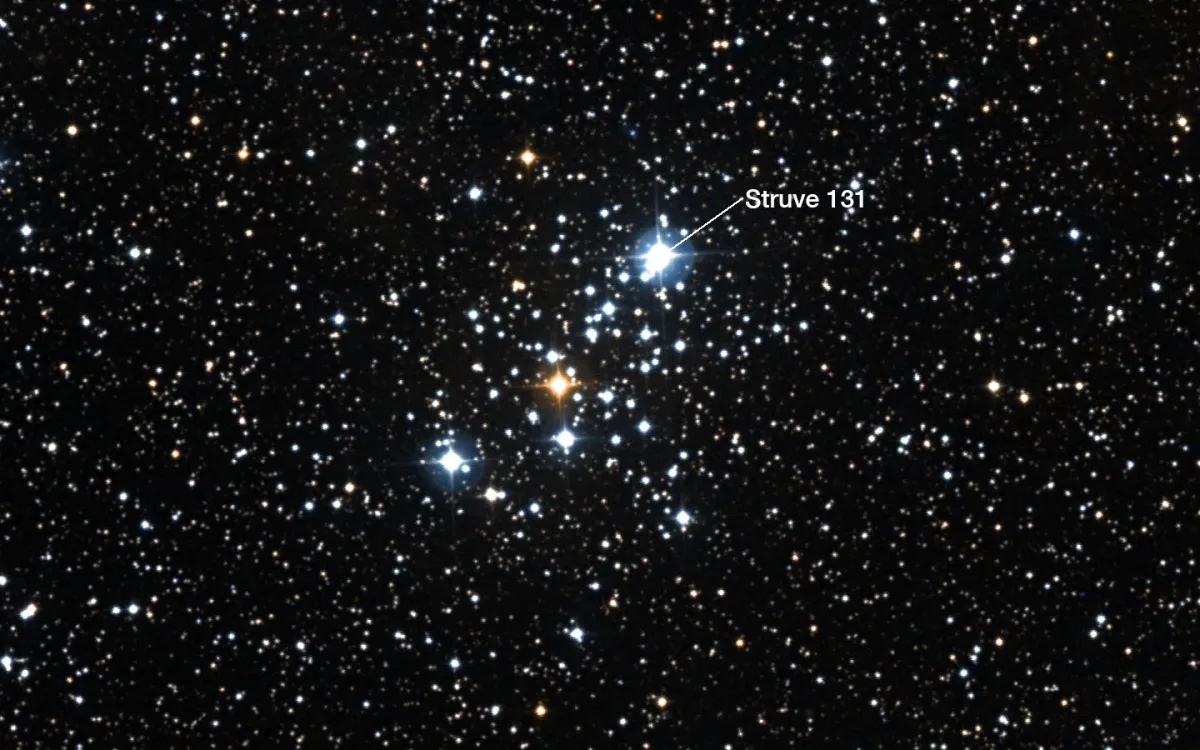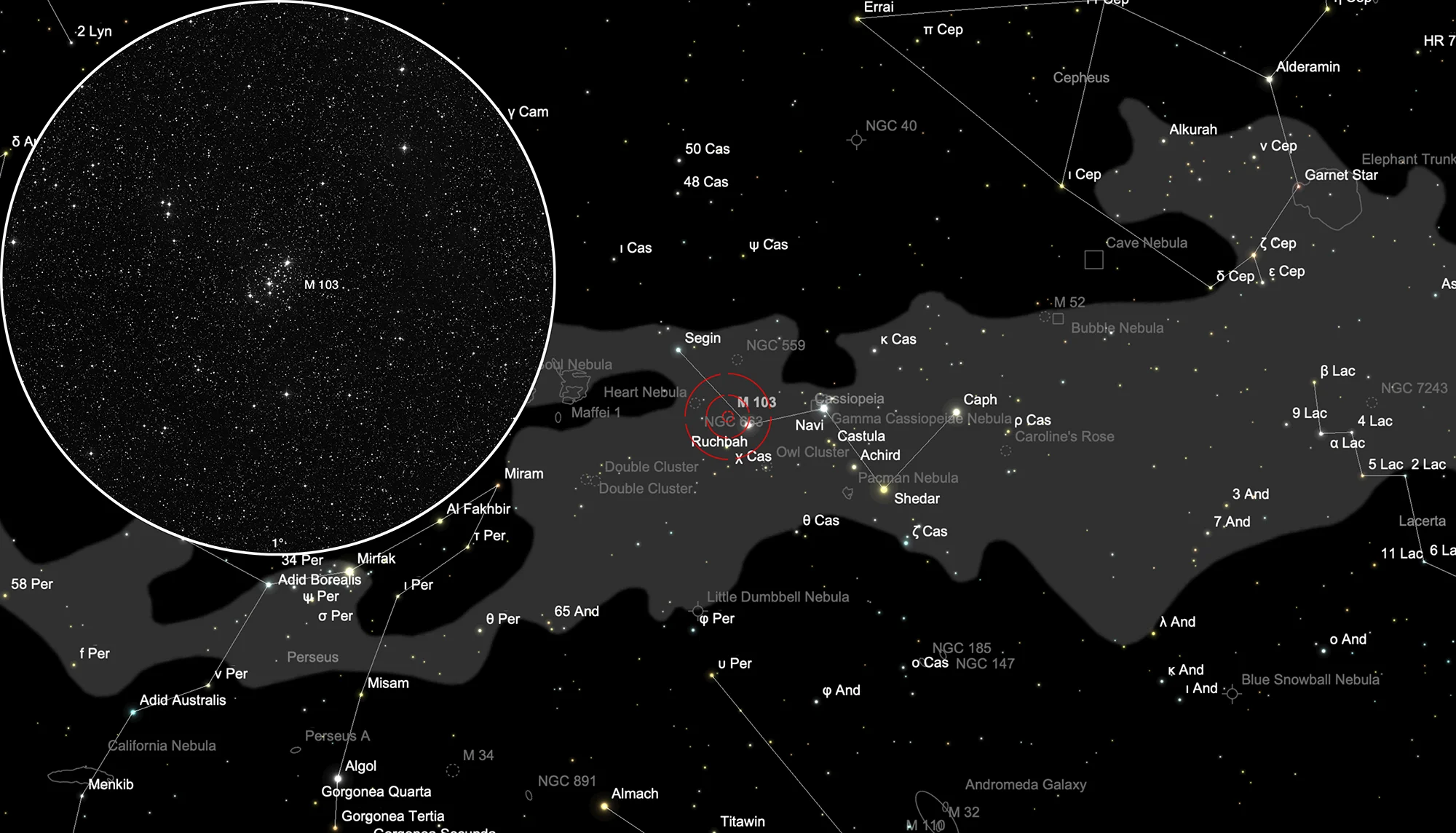Open Cluster Messier 103

History
The open star cluster M 103 was discovered by Pierre Méchain on 27 March 1781. He described it as a «cluster of stars between ε and δ of the legs of Cassiopeia». [281]
Physical Properties
M 103 is of the Trumpler type III2p. It is about 7'100 light years away from us and is approaching us at a speed of 45 km/s. A striking feature is the double star Struve 131 (ADS 1209, HD 9311) in the northwest of the cluster. Its two stars are 7.2 mag and 9.8 mag bright and 13.9 arc seconds apart. The double star does not belong to the cluster. [145]
| Designation | NGC 581 |
| Type | OCL (III2p) |
| Right Ascension (J2000.0) | 01h 33m 23.0s |
| Declination (J2000.0) | +60° 39' 30" |
| Diameter | 6 arcmin |
| Visual magnitude | 7.4 mag |
| Metric Distance | 2.194 kpc |
| Dreyer Description | Cl, pL, B, R, Ri, st 10…11 |
| Identification, Remarks | h 126; GC 341; M 103; OCL 326 |
Finder Chart
The open star cluster M 103 is located in the constellation Cassiopeia between the stars Segin (ε Cassiopeiae) and Ruchbah (δ Cassiopeiae). The constellation is highest in the months of June to March.
Visual Observation
300 mm Aperture: Messier 103 appears as a triangular star cluster with two red stars facing each other as if they were the eyes of a goblin. Depending on its orientation, however, the cluster also looks like a small fir tree with two red balls. — 300 mm f/4 Popp-Newton, Hasliberg, SQM 20.9, 18. 10. 2025, Bernd Nies
